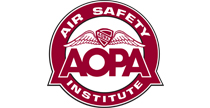All hail breaks loose on final
(IAD03FA069)
 August is summer’s swan song, a farewell to the waning season of lazy, hazy days. But summer doesn’t always exit quietly, and August thunderstorms can pack a hefty punch for pilots caught unaware. Blinding rain, gale-force winds, damaging hail, and intense downdrafts are all serious hazards in their own right. Bring them together and attempt to land an airplane amid the tempest, and a disaster is all but inevitable.
August is summer’s swan song, a farewell to the waning season of lazy, hazy days. But summer doesn’t always exit quietly, and August thunderstorms can pack a hefty punch for pilots caught unaware. Blinding rain, gale-force winds, damaging hail, and intense downdrafts are all serious hazards in their own right. Bring them together and attempt to land an airplane amid the tempest, and a disaster is all but inevitable.
On Aug. 2, 2003, a Piper PA-34-200T Seneca crashed during an aborted landing in a thunderstorm in Galion, Ohio. After encountering hail, strong wind gusts, and driving rain that reduced forward visibility to zero on final, the pilot attempted to go around. Unable to climb in a strong downdraft, the airplane struck terrain, killing the pilot and a passenger and seriously injuring two others on board.
Related Links
Weather Wise: Thunderstorms and ATC interactive course
Storm Week thunderstorm awareness resources
Thunderstorms Safety Quiz
Thunderstorm Avoidance Safety Quiz
The flight left Akron-Canton Regional Airport in Akron, Ohio, shortly after 2 p.m. for an hour-long VFR trip to Galion Municipal Airport. Two hours prior to departure, the pilot called the Cleveland Automated Flight Service Station and obtained a weather briefing. He told the briefer that he planned to depart within an hour.
The weather briefer advised the pilot that the air mass along the route of flight was unstable and that cumulus clouds were starting to appear on satellite imagery in western Ohio. According to the area forecast, scattered showers and thunderstorms were possible after 1 p.m. The briefer cautioned about the potential for convective activity and advised the pilot to obtain another weather briefing just prior to departure.
The pilot left Akron an hour later than planned—without receiving a follow-up briefing. The flight proceeded without incident until shortly before 3 p.m., when the pilot encountered heavy rain as he approached the Galion area. A surviving passenger later reported that the rain was striking the aircraft so hard that it was difficult to hear radio transmissions from ATC.
The Seneca overflew Galion Airport and entered the downwind leg for Runway 5. The thunderstorm intensified, dropping hail and heavy rain with 50-mph wind gusts. According to the front-seat passenger, the precipitation was so heavy on final that the pilot could only see out the airplane’s side windows. About 25 to 50 feet above the runway, the pilot aborted the landing because he couldn’t see forward and attempted to go around. After adding power, he said repeatedly, “It won’t climb. It won’t climb....”
The wreckage was found about a quarter-mile from the end of the runway. The impact killed the pilot, a multiengine instructor with more than 1,300 hours of flight time, and one of the passengers. The pilot’s wife and 3-year-old daughter survived with serious injuries.
According to weather radar data, Level 5 (now reported as “extreme”) thunderstorm activity was located over the Galion Airport area at the time of the crash. The NTSB attributed the accident to the pilot’s improper in-flight decision making and flight into known adverse weather conditions while maneuvering to land. His failure to regard the preflight weather briefing was also cited as a cause. Contributing factors were the thunderstorm, rain, wind gusts, and hail.
Having current weather information is important for any flight, but it becomes absolutely critical when convective activity is forecast. The pilot launched an hour later than planned without getting an updated weather briefing. The flight took place during the period of peak afternoon heating on a humid day with unstable atmospheric conditions present—the perfect recipe for thunderstorms.
Even with up-to-date weather information, a pilot still must be prepared to divert if conditions deteriorate. When the accident pilot first encountered adverse weather near his destination, he could have diverted to another airport and waited out the storm. Instead, he pushed ahead and set up for landing as conditions became extreme.
The final mistake was the decision to go around. Thunderstorms can produce intense downdrafts, especially where heavy precipitation is falling. Climbing may be impossible, even for a twin. Once established above the runway threshold, typically the safest choice is to commit to landing—even if it isn’t pretty. If forward visibility is zero, use the side window to keep yourself over the asphalt and to help guide the flare. In the midst of a violent thunderstorm, getting the airplane safely on the ground should be the top priority. Don’t tempt the tempest with another trip around.